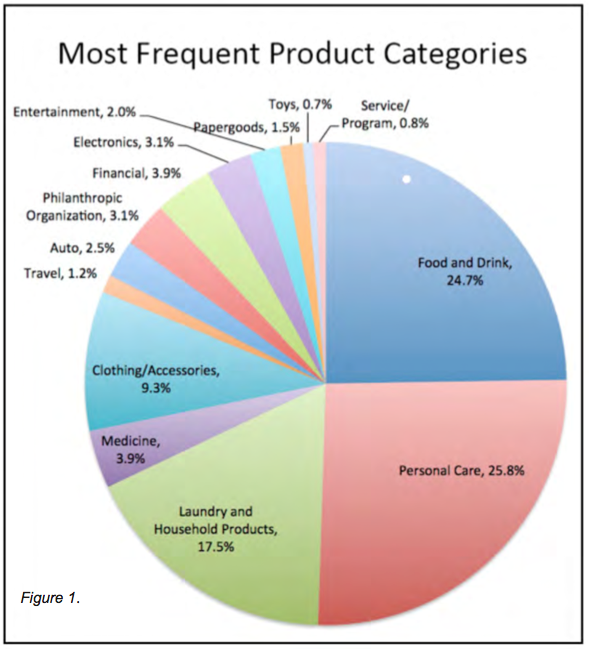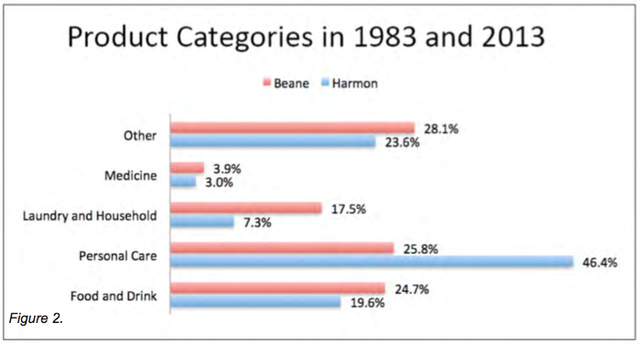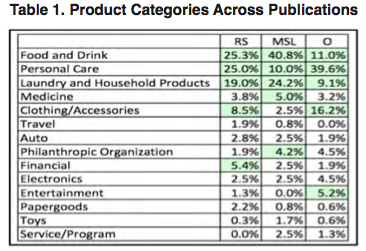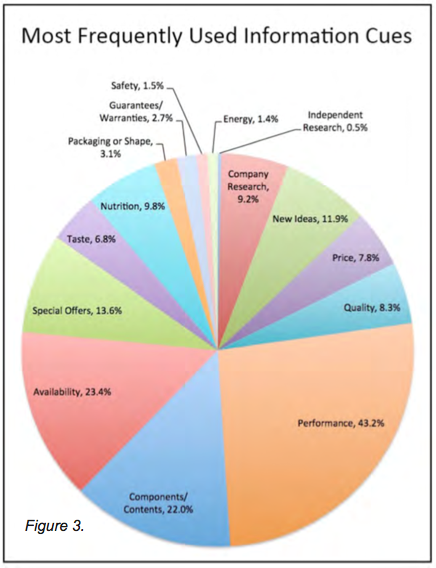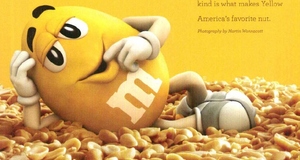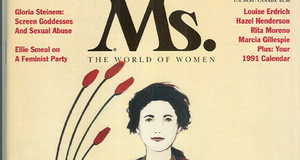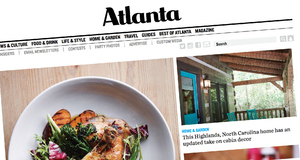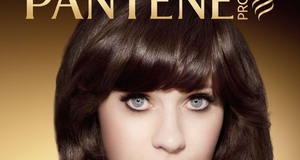From Elon Journal of Undergraduate Research in Communications VOL. 4 NO. 2Appealing to Women: An Analysis of Print Advertisements in Three Women's Interest MagazinesIV. Findings & DiscussionProduct Categories: Overall Product CategoriesRQ1 asked what product categories were most advertised in women's interest magazines. The top five product categories were food and drink, personal care, laundry and household products, medicine, and clothing/accessories. This can be seen in Figure 1.
Product Categories – A 30-Year SpanRQ2 is about significant differences between product categories advertised or appeals used in Harmon, Rassouk, and Stern's 1983 study and this study? In Figure 2, the data from this study (marked as "Beane") was compared with the Harmon, Rassouk, and Stern study (marked as Harmon), which was performed in 1983.To effectively compare the two studies, the author combined the product categories of clothing/ accessories, travel, Auto, Philanthropic Organization, financial, electronics, entertainment, paper goods, toys, and service/program from this 2013 study into a new category called "Other." They make up 28.1%f the data. The product categories "Durables" and "Other Products/services" from Harmon, Rassouk, and Stern's 1983 study were combined into a category titled "other," which accounted for 23.6% of the data. Some changes have occurred over the 30 years: 10.2% more advertisements for Laundry and Household items found in the 2013 study; 5.1% more for food and drink items; and 20.6% down for personal care items.
Product Categories: Comparing PublicationsRQ3 asked whether there are significant differences among three magazines in terms of product categories? Table 1 shows the percentages of each product category in each of the three different publications. Real Simple is indicated by "RS," Martha Stewart Living is indicated by "MSL," and O, The Oprah Magazine is indicated by "O." The top 5 categories for each publication are highlighted. In terms of food and drink, MSL has the largest portion of advertisements (40.8%), followed by RS (25.3%) and O (11.0%), as shown in Table 1. This difference occurs because each of the magazines focuses on different themes. Food/Entertaining is listed as one of MSL's core editorial Themes (Martha Stewart Omnimedia, 2013). O makes no mention of food or entertaining in their positioning statement and food/beverage editorials make up only 11% of their editorials (The Hearst Corporation, 2013). RS "turns to us for the quick and effective fixes for her home, meals, celebrations, and messes" and still had a significant amount of advertisements in this category, with 25.3% (Real Simple, 2013).
In advertisements in the personal care category, O (39.6%) was followed by RS (25.0%) and a distant third, MSL (10.0%). This is because O treated this as a "catalyst that helps confident, intelligent, affluent women live their best life. With an emphasis on personal growth, it engages and addresses every aspect of a woman's life – the material, the intellectual and the emotional" (The Hearst Corporation, 2013). Additionally, editorials concerning personal growth make up 16% of their editorials (The Hearst Corporation, 2013). In the case of advertisements for laundry and household products, MSL (24.2%) was followed by RS (19.0%) and O (9.1%). This is because one of MSL's core editorial themes is decorating & home (Martha Stewart Omnimedia, 2013). Additionally, MSL has a "detailed emphasis on every aspect of today's wellrounded lifestyle – from food and entertaining, crafting and decoration, to holidays, celebrations, family, and work – the brand remains keenly relevant, authentic, and meaningful by designing innovative solutions to thehallenges of living well" (Martha Stewart Omnimedia, 2013). RS's editorial calendar for 2013 features "closet organizing," "cleaning shortcuts/routines," "home handbook," and others. Additionally, 77% of RS's readers own their own home. Their readers are homeowners who look for ways to organize and clean their home. Therefore, it is logical that there were many advertisements that fall into the laundry and household product category. O had many advertisements that fell under the clothing/accessories category, the second largest product category with 16.2%, followed by RS (8.5%) and MSL (2.5%). Style is one of the core editorial themes in O so this fact is not surprising (The Hearst Corporation, 2013). In terms of travel, which included brands such as Westin, Disney, Hilton, Hyatt, RS led MSL (.8%) and O (0%). This may be because RS audience has the highest median household income. RS readers' median household income, $92,145, exceeded that of MSL ($72,477) and O ($68,991). The higher median household income is correlated with more ads that promote travel. Martha Stewart Living (4.2%) and O, The Oprah Magazine (4.5%) had more advertisements for philanthropic organizations that Real Simple (1.9%). Advertisements for financial services, which included brands such as Ally, Chase, BB&T, Wells Fargo, Citi, Fidelity, etc. made up 5.4% of products advertised in RS, followed by MSL (2.5%) and O (1.9%). The difference among the three magazines may be due to the income differences among different readers. Advertisers are more likely to advertise financial services in publications that have audiences with higher median household incomes. There were significantly more advertisements for products that were categorized under the entertainment category in O (5.2%) than in RS (1.3%) or MSL (0%). Brands in the entertainment category included Barnes & Noble, People Magazine, Dr. Phil, etc. Product Categories: Taylor's Six-Segment Message Strategy WheelFigure 3 shows the product categories from the Resnik-Stern Content Classification system broken up in Taylor's Six-Segment Message Strategy Wheel. The product categories were placed based on the explanations of the six different segmentsn Taylor's study (1999). The products under the category of segment 4 make up a significant 68% of the advertisements found in the three magazines. Taylor found that users placed groceries and personal-care products into this category. People tend to perpetually buy the same brand for these prod-cts because people believe there is little difference among them. It is not surprising because advertisers need to penetrate this market given that usersypically buy products in a routine way. Suggested Reading from Inquiries Journal
Inquiries Journal provides undergraduate and graduate students around the world a platform for the wide dissemination of academic work over a range of core disciplines. Representing the work of students from hundreds of institutions around the globe, Inquiries Journal's large database of academic articles is completely free. Learn more | Blog | Submit Latest in Business & Communications |

